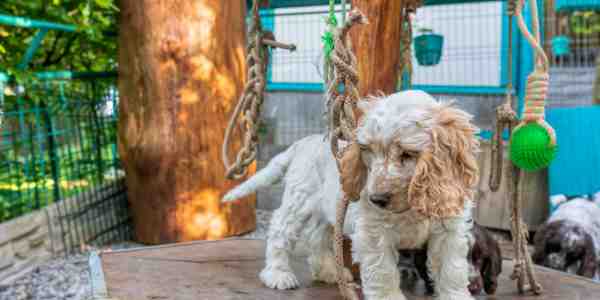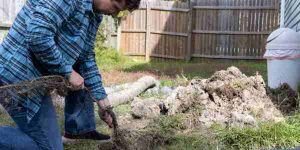Pet Friendly Landscaping

Pet-Friendly Landscaping: Creating a Safe and Enjoyable Outdoor Space for Your Pets
As a pet owner, your furry friends are part of the family, and ensuring they have a safe, enjoyable outdoor space is essential. Pet-friendly landscaping can be both beautiful and functional, providing a haven for your pets while enhancing your yard’s aesthetic appeal. At Impact Landscapes, we understand the unique needs of pet owners and are here to offer tips for creating a pet-friendly landscape that both you and your pets will love.
1. Choose Pet-Safe Plants
One of the first steps in creating a pet-friendly landscape is selecting plants that are safe for your pets. Many common garden plants can be toxic to animals if ingested. To ensure your pets’ safety, opt for non-toxic plants such as:
- Marigolds: Bright and cheerful, marigolds are safe for pets and can help repel pests.
- Sunflowers: These towering beauties are non-toxic and can provide shade and shelter.
- Rosemary and Basil: These herbs are not only safe but can also add delightful scents to your garden.
- Petunias: Available in a variety of colors, petunias are safe for pets and can add vibrant splashes of color to your yard.
Avoid plants like azaleas, lilies, and daffodils, which can be harmful to pets.
2. Create Secure Boundaries
Ensuring your pets stay within the safety of your yard is crucial. Secure fencing is a must for any pet-friendly landscape. Depending on your pets’ size and behavior, you may need different types of fencing:
- Wooden or Vinyl Fences: Solid fences provide privacy and security, preventing pets from seeing distractions outside the yard.
- Chain-Link Fences: These are durable and can be customized with privacy slats or climbing plants.
- Invisible Fences: While not physical barriers, these can help train pets to stay within certain areas. However, they should be used with caution and proper training.
For pets that like to dig, consider installing an underground barrier at the base of your fence to prevent escapes.
3. Designate a Digging Area
Dogs, in particular, love to dig. Instead of constantly battling this instinct, create a designated digging area where your pets can indulge their natural behavior. A sandbox or a specific section of your yard filled with loose soil can be an excellent solution. Encourage your pets to use this area by burying toys or treats for them to find. This not only keeps your garden beds intact but also provides mental stimulation for your pets.
4. Provide Shade and Shelter
Pets need protection from the elements just as much as humans do. Make sure your yard has plenty of shaded areas where your pets can escape the heat. Trees, pergolas, and shade sails are all great options. Additionally, consider creating a sheltered area where your pets can retreat during inclement weather. A small, cozy doghouse or a covered patio can provide a safe haven from rain or extreme temperatures.
5. Install Pet-Friendly Paths
Create pathways in your yard that your pets can use to navigate without damaging your plants. Mulch, pea gravel, and smooth stones are all good choices for pet-friendly paths. These materials are gentle on paws and can help keep your garden looking neat. Avoid sharp stones or materials that can get too hot in the sun, as these can be uncomfortable for your pets.
6. Use Pet-Safe Mulch
Mulch is essential for maintaining moisture in your soil and controlling weeds, but some types can be harmful to pets. Cocoa mulch, for example, is toxic to dogs. Opt for pet-safe alternatives such as cedar, pine, or hemlock mulch. These options are safe for your pets and can add a natural, attractive look to your garden beds.
7. Create a Water Feature
Many pets enjoy playing in water, especially on hot days. Consider adding a pet-friendly water feature to your yard. A small pond, fountain, or even a shallow kiddie pool can provide hours of entertainment and a way for your pets to cool off. Just ensure the water is fresh and clean, and avoid deep or complicated water features that could pose a drowning risk.
8. Install Pet Waste Stations
Maintaining a clean yard is crucial for both the health of your pets and the appearance of your landscape. Install pet waste stations in convenient locations around your yard to encourage prompt cleanup. This can include a designated trash can with a lid and a supply of waste bags. Regularly cleaning up after your pets helps prevent odors and keeps your yard looking its best.
9. Plan for Play Areas
Your pets need space to run and play. Designate areas of your yard specifically for pet activities. Open lawns are ideal for dogs that love to run and fetch, while cats might appreciate climbing structures or hidden nooks to explore. Ensure these play areas are safe and free from hazardous objects or toxic plants.
10. Incorporate Stimulating Features
Pets need mental stimulation to stay happy and healthy. Incorporate features in your yard that can provide this stimulation. Agility equipment, tunnels, and interactive toys can keep your pets entertained and engaged. Rotate toys and change up activities to keep things interesting for your pets.
Conclusion
Creating a pet-friendly landscape involves careful planning and consideration of your pets’ needs and behaviors. By choosing safe plants, securing boundaries, providing shade and water, and designing engaging play areas, you can create a yard that is both beautiful and functional. At Impact Landscapes, we are committed to helping you design and maintain a landscape that your whole family, including your furry friends, can enjoy. Contact us today to start planning your pet-friendly outdoor oasis.



